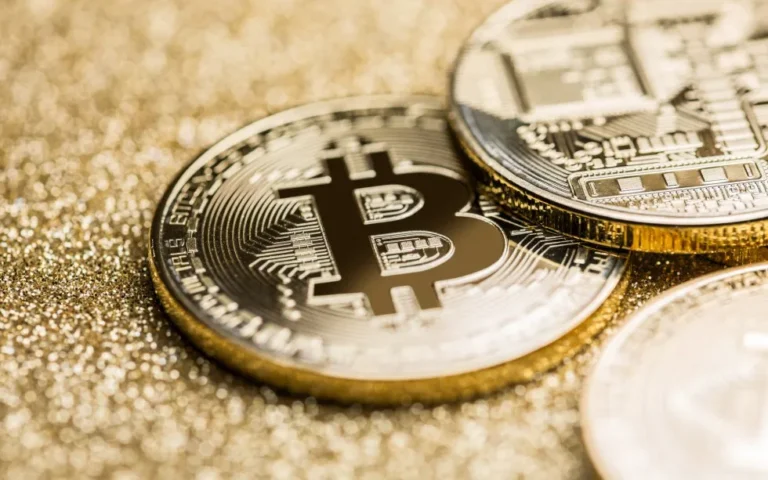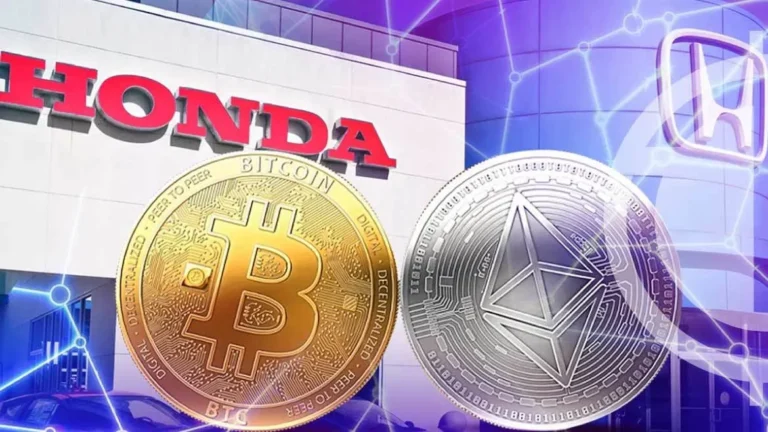Bitcoin Miner Codes and How Mining Works: A Beginner’s Guide
What exactly are Bitcoin miner codes? An intending or aspiring Bitcoin miner would ask trying to have a full understanding of the term before thinking of mining at last.

Before venturing into underscoring the semantics of Bitcoin miner codes, we must learn about Bitcoin mining.
welcome to Blockchainburst, the home of blockchain and crypto-related articles. Kindly read further.
What is Bitcoin Mining?
Bitcoin mining is the way by which transactions are officially entered on the blockchain. It is also the process new bitcoins are launched into circulation.
Mining is carried out by miners using hardware and software to generate a cryptographic number that is equal to or less than a number set by the Bitcoin network’s difficulty algorithm.
The first miner to find the solution to the problem earns bitcoins as a reward, and the process begins again. This reward is an incentive that spurs miners to assist in the primary purpose of mining: to earn the right to record transactions on the blockchain for the network to verify and confirm.
Before committing to investing your time and buying expensive equipment, read on to see whether mining is really for you.
How the Bitcoin Mining Process Works

Mining is a complex procedure, but in a nutshell, when a transaction is made between wallets, the addresses and amounts are entered into a block on the blockchain.
The block is assigned some details, and all of the data in the block is put through a cryptographic algorithm (called hashing). The result of hashing is a 64-digit hexadecimal number or hash.
The Hash
Here is an example of a hash:
0000000000000000057fcc708cf0130d95e27c5819203e9f967ac56e4df598ee
The number above contains 64 digits. As you probably noticed, that number consists not just of numbers but also letters. Why is it so?
The decimal system makes use of factors of 100 as its base (e.g., 1% = 0.01). This, in turn, means that every digit of a multi-digit number has 100 possibilities, zero through 99. In computing, the decimal system is simplified to base 10, or the numbers zero through nine.
Hexadecimal, on the other hand, stands for base 16 because “hex” is derived from the Greek word for six, and “deca” is derived from the Greek word for 10. In a hexadecimal system, each digit contains 16 possibilities.
However, our numeric system only gives 10 ways of representing numbers (zero through nine). That is why you have to add letters—specifically, the letters A, B, C, D, E, and F.
Target Hash and Nonce
Miners are guessing a number that is lower than the target hash. The target hash is a hexadecimal number set to demand an average number of attempts.
Miners make these guesses by adjusting the nonce, which is part of the information being hashed. The nonce is short for “number only used once,” and it is the key to generating these 64-bit hexadecimal numbers.
Due to size constraints, the block field the nonce is stored in only allows for a number of up to about 4.5 billion; it must be rolled over using another counter because generating 4.5 billion hashes takes less than one second.
This counter comes from the coinbase transaction field, which is much larger—it is called the extra nonce. Using the nonce and the extra nonce as counters offers the blockchain the ability to generate an astronomical number of attempts.
When information is hashed, it always produces the same output unless something changes. So, the mining program sends block information with a zero as the first nonce through the hashing function.
If that number is wrong, the nonce is topped up by a value of one, and the hash is generated again. This continues until a hash that is less than the target hash is generated.
Hash Example
Now, if you were to hash “Hello World!” using an online SHA256 generator, you might get
KeyCDN. “Tools: SHA256 Generator.”
7f83b1657ff1fc53b92dc18148a1d65dfc2d4b1fa3d677284addd200126d9069
Add a digit to the end, like “Hello World!0” and rehash it. You are likely going to get:
e59f8bdf1305e382a4919ccefd613d3eebae612aa4c443f3af2d65663de3b075
Then, increase the number by one—”Hello World!1″ and rehash it. You might get:
9e2be792bcd092bd5ab7bdac7bda1ae5d0db9f6d052a3c819615900c7c06e9be
This is mining, but it’s carried automatically by the mining program. It takes trillions of attempts for the network of miners to find the solution.
Why Bitcoin Needs Miners
Blockchain mining is the computational work that network nodes carry out to validate the information contained in blocks.
So, in reality, miners are essentially getting incentives for their work as auditors. They are conducting the first verification of Bitcoin (BTC) transactions, opening a new block, and being rewarded for their work.
Why Mine Bitcoin?
One of the major reasons people invest time and money in mining is for the reward of bitcoins, which, over time, have become very valuable.
For instance, on March 8, 2024, bitcoin’s price topped $70,000 for the first time, closing at $68,285. The reward at the time was 6.25 bitcoin. Therefore, at the close of trading, that reward was worth $426,781.25.
The rewards for mining Bitcoin are cut in half every four years. When first mined in 2009, one block would get you 50 BTC. In 2012, this was halved to 25 BTC. By 2016, this was halved again to 12.5 BTC. On May 11, 2020, the reward was halved again to 6.25 BTC. The reward is predicted to halve again in April 2024 to 3.125 BTC.
Due to the halving process and increasing prices, miners wish to receive as many bitcoins as possible because the supply of new coins is slowly dwindling. Sometime around 2140, there will be no more new bitcoins created.
The competitive pay-to-mine will disappear, with only the transaction fees remaining as a reason to participate in Bitcoin’s network.
Some miners might still participate as a way to take part in a decentralized currency, but it’s likely that without the reward, most people will not wish to mine. That is unless the fees increase enough to make it worth their while.
What You Need to Mine Bitcoin
The majority of the Bitcoin network mining capacity is owned by large mining companies and pools. It is still possible to take in Bitcoin mining with a regular at-home personal computer if you have one of the latest and fastest graphics processing units.
However, the chances of receiving any reward by mining on your own with a single GPU in your computer are minuscule. You will need to find a mining pool (discussed below) to increase your chances.
For example, a processing card that you can purchase for a couple of thousand dollars would represent less than 0.001% of the network’s mining power. It could be a long time—if ever—before you solve a hash because it’s all about how many hashes per second your machine can generate. With such a slight chance of finding the next block, you may never recoup your investment.
1. Mining Hardware
To be able to mine with some chance for success, you will need to invest in one of the top graphics processing units (GPUs, often called video cards) for your computer or an application-specific integrated circuit (ASIC).
Capable GPUs can range in price from about $1,000 to $2,000; ASICs can cost much more, into the tens of thousands of dollars.
Today, most of the Bitcoin mining network’s hashing power is almost completely made up of ASIC machine mining farms and pooled individual miners. ASICs are many orders of magnitude more powerful than CPUs or GPUs.
They gain more hashing power and energy efficiency every year as new chips are developed and deployed. For the right price (more than $11,000), you could mine at 335TH for 16.0 joules per tera hash (16 watts at one trillion hashes per second).8 There are much more affordable hardware versions, but the more you pay, the faster you can hash.9
2. Mining Pools
Mining pools are operated by third parties and coordinate groups of miners. By working together in a pool and sharing the payouts among all participants, miners have a better chance of being rewarded than they have working alone.
Downsides of Mining
1. The risks of mining are very financial. Bitcoin mining requires that you go through all the effort and expense of purchasing hundreds or thousands of dollars worth of equipment only to have the possibility of no return on your investment.
2. In some jurisdictions, mining and using Bitcoin are illegal. It may be a good idea to research your country’s regulatory stance and overall sentiment toward cryptocurrency before investing in mining equipment.
3. There are numerous concerns about Bitcoin mining’s environmental impacts and carbon footprint. For instance, the energy required by the network is vast, approximated by some to equal the energy used by smaller countries.
Though microchip efficiency has increased dramatically for ASICs, large mining firms generate a large amount of electronic waste (e-waste) as they continually upgrade their equipment to meet the ever-growing hashing speeds needed to remain competitive. Digiconmist estimates that the amount of e-waste created annually is 27.66 kilotons.
Mining equipment also generates a lot of heat, so your cooling bill will likely increase, especially if you have one or more ASICs running 24 hours every day.
There are, however, efforts to mitigate this negative externality by seeking cleaner and green energy sources for mining operations (such as geothermal or solar sources) and utilizing carbon offset credits.
Switching to less energy-intensive consensus mechanisms like proof-of-stake (PoS), which Ethereum has transitioned to, is another strategy.
However, PoS comes with its own set of drawbacks and inefficiencies, such as incentivizing hoarding instead of using coins and a risk of centralizing consensus control.
How Long Does it Take to Mine 1 Bitcoin?
The Bitcoin reward is programmed to be cut in half in April 2024 to 3.125 every 10 minutes. In 2028, 1.5 bitcoin will be mined every 10 minutes. In 2032, it will take 10 minutes to mine 0.78 bitcoin.
Is Bitcoin Mining Legal?
In many jurisdictions, Bitcoin mining is legitimate. However, there are still some countries where it is illegal, so it’s essential to check the activity’s status in your country before you start mining.
Does Bitcoin Mining Actually Pay?
Bitcoin mining can be lucrative if you contribute enough hashing power to a mining pool to receive larger rewards. If you’re solo mining at home on your computer, you may never receive rewards.
Is it Still Profitable to Mine Bitcoin?
You can still get rewards by joining a mining pool. But because the reward halves over time and you are competing with businesses that specialize in mining, the chance for profit continues to decline.
The Bottom Line
Bitcoin mining serves the important function of validating and confirming new transactions on the Bitcoin blockchain.
It is also the manner in which new bitcoins are introduced into the system. It is possible to mine on different hardware and machines, but to achieve profitability and to be competitive, you’ll need to join a mining pool.







